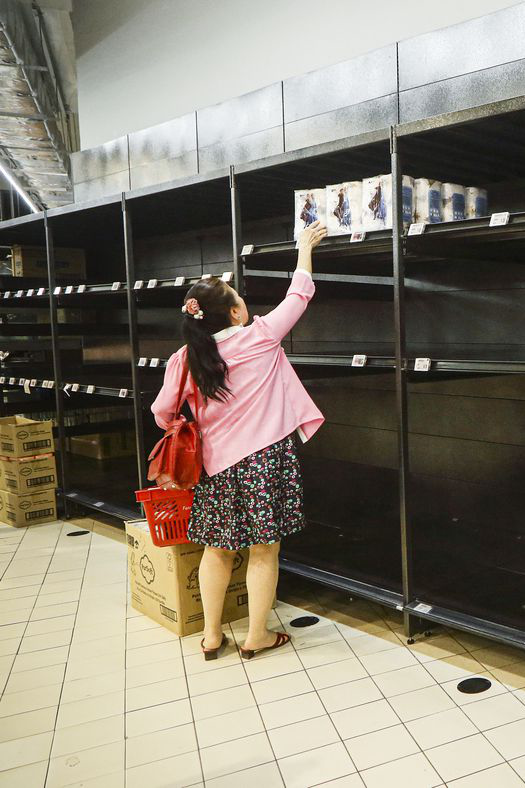
The will to think is embedded in each of us. History shows us that. Pandemic or not.
Believing is easier than thinking. Hence so many more believers than thinkers.
—Bruce Calvert
The number of Coronavirus cases is 353,905 worldwide, while the death toll, as of this writing has reached 15,420. Currently, 35,232 individuals in the U.S. have tested positive for this virus, also known as Covid-19. There have been 459 reported deaths. Because of its rapid spread, the World Health Organization has defined Covid-19 as a pandemic. And although the spread of infectious disease has been much more fully understood over the course of the last few centuries, the age-old practice of quarantine continues to be a mainstay in the prevention of further spread of disease. No matter what it is called, though – social distancing, isolation, or quarantine – the idea of separating oneself from society, either voluntarily or because of mandate, is a rough proposition for most. Whether a skeptic or believer, though, many will find themselves pressing up against the boundary of reason. What is real? What is propaganda? Are we being strong-armed by an insidious agenda, or informed by experts who have our best interest in mind?
In a world rushed by news and clamped to social media, the ability to realize what is true is obscured and corrupted, an irony of the information age. People feel informed simply because they have grazed on a spate of information, oftentimes, that is out of context, superficial, or simply untrue. This, coupled with the fact that many Americans are no longer trained to read and digest information comprehensively, to delve into unfamiliar subject matter with an analytic mind, contributes to a heightened sense of panic, one that spins and reverberates in the far reaches of the internet, and gels into a sense of collective hysteria.
How can you be a genuinely informed person who deciphers valid points from the junk that passes as news? First, disrupt the flow of disjointed hype that you accept. Collect data in the context of a bigger intellectual picture. Don’t accept a sentence taken from its frame of reference as gospel. Take your search back to the origin of what’s said, and then expand on it.
A reasonably informed person takes disparate ends of information and pulls them together, knowing that some things will be clear, while others will not. Our academic institutions put great stock in teaching “critical thinking skills,” but the truth is they have failed on many levels. This is evidenced by the fact that many educated people consider themselves informed about the current pandemic if they can repeat a few flashpoints from Fox News or CNN. So, educate yourself in a robust way, and don’t be afraid to question people, even the experts.
Understand basic facts about this pandemic, and about viruses in general. This will give context to your learning, so that useless chains of unframed chatter don’t clutter your mind. A base level of knowledge allows you to ask intelligent questions and provides a foundation for future fact-finding. Know, for example, that Covid-19 is one of many Corona viruses, and that its predecessors, both MERS and SARS CoV 1, also reached pandemic status, and each was mitigated by extreme vigilance.
Know that a pandemic is actually defined by the spread, not the virulence of the disease that it causes, and so scientists measure the infectiousness of a disease by assigning an Ro, or basic reproduction number, known as “R Naught.” This number indicates how many people each sick person will infect. The flu is a 1.5, meaning that each infected individual can potentially pass the virus on to one and a half others, while SARS was more infectious, with an assigned No of 3.5. Measles, on the other hand, is far more contagious. Its No is 16. At this time, scientists estimate that the Ro for Covid-19 is between 1.5 and 3.5, and the goal of public health experts is to lower that number to a 1. This is what happened during the SARS pandemic, after isolation measures were put into effect.
Be aware that the seasonal flu continues to be far more lethal than Covid-19, killing upwards of 30,000 people each year, and infecting 34 million in 2018-19. And although an annual flu vaccine is available, these vaccines are not always completely protective, and many fall ill with the flu each year. Mortality rates for flu are consistently higher in the aged and in those who have certain pre-existing conditions. This is an irrefutable fact, one that appears to be a trend with Covid-19-related mortality rates as well.
The alarmingly high Covid-19-related mortality rate in Italy, therefore, most likely correlates with the fact that this country has the second oldest population in Europe, and the people who are severely afflicted there are elderly. Additional reasons for Italy’s high mortality rate have been theorized, and include the fact that it has the highest rates of antibiotic resistance in Europe. This can contribute to increased pneumonia deaths in Covid-19 related illness. These essential facts are certainly not highlighted in the conventional media.
During a time of crisis, people are especially vulnerable to information that is replete with unsubstantiated claims, or that omits certain key facts. News is splintered and politicized, as catastrophic stories whiz and flash over computer screens.
A recent report that has been circulating in the media illustrates this point. Major news outlets have reported that 30% of the Covid-19 cases have been seen in the 20-44 year-old age group. This naked statistic has a certain amount of shock value attached to it, but a quick review of CDC statistics shows that in 2018-2019, there were 11,913,203 cases of flu reported in the18-49 year age group. This represents 33% of total flu cases that season.
Another frightening figure, extracted by news sources from the same MMWR (Mortality and Morbidity Weekly Report) as referenced above, titled Severe Outcomes Among Patients with Coronavirus Disease 2019-United States, February 12-March 16, 2020, states that, among “121 patients known to have been admitted to an ICU… 12 % were adults aged 20-44.” This statistic, taken from a very limited survey of early cases in the US, has been touted as evidence that Covid-19 is a much deadlier disease than originally thought. However, there is no data to support such a claim. The report, if read to the end, explains that “data on other risk factors, including serious underlying health conditions that could increase risk for complications and severe illness, were unavailable at the time of this analysis.” Simply put, the 12% figure is completely meaningless absent any knowledge of underlying conditions in this population.
Data on this pandemic is still unfolding. That is the nature of pandemics. Deaths rates and morbidities are collected in real time, but the scope of the narrative is consistently changing, as epidemiologists and public health officials race to predict death rates and the rate of infection going forward. The death rate, which is what people ultimately worry about, is also a moving target, and fluctuates as more people test positive. As of this writing, it is postulated by some experts that the death rate is decreasing, from an initial estimate of 3.4% downward to 1%, or even lower.
It’s easy to conflate hype with reality, and to allow vigilance to turn on reaction and irresponsible, fragmented claims. What’s real, what’s unfolding, is both more, and less complicated than ever. The answers, the gist of what we want to know, are still a series of moving parts. It is not a time to dumb down, or to give in to the sanctity of collective angst and thought.
How we choose to learn and how we grapple with problems and questions in an intelligent way is what sets each of us apart from the pack. It’s what grounds us and propels us, moving forward, though it’s a lonely game at times.
The will to think is embedded in each of us. History shows us that. Pandemic or not.
Published in Signs of the Times Sott.net on 3/25/2020.

 Heffernan Research offers a range of English language tutoring options. Individual and small group sessions are available. Special classes on focused topics, such as essay writing, are also offered throughout the year. Margot works with ESL students as well as individuals who need to enhance specific English language skills.
Heffernan Research offers a range of English language tutoring options. Individual and small group sessions are available. Special classes on focused topics, such as essay writing, are also offered throughout the year. Margot works with ESL students as well as individuals who need to enhance specific English language skills.
 Margot Heffernan has solid and extensive experience writing about a broad range of medical topics. She uses her expertise to provide comprehensive and academically sound papers for medical malpractice, product liability, and personal injury lawyers as well as other professionals who need reliable medical information.
Margot Heffernan has solid and extensive experience writing about a broad range of medical topics. She uses her expertise to provide comprehensive and academically sound papers for medical malpractice, product liability, and personal injury lawyers as well as other professionals who need reliable medical information.
